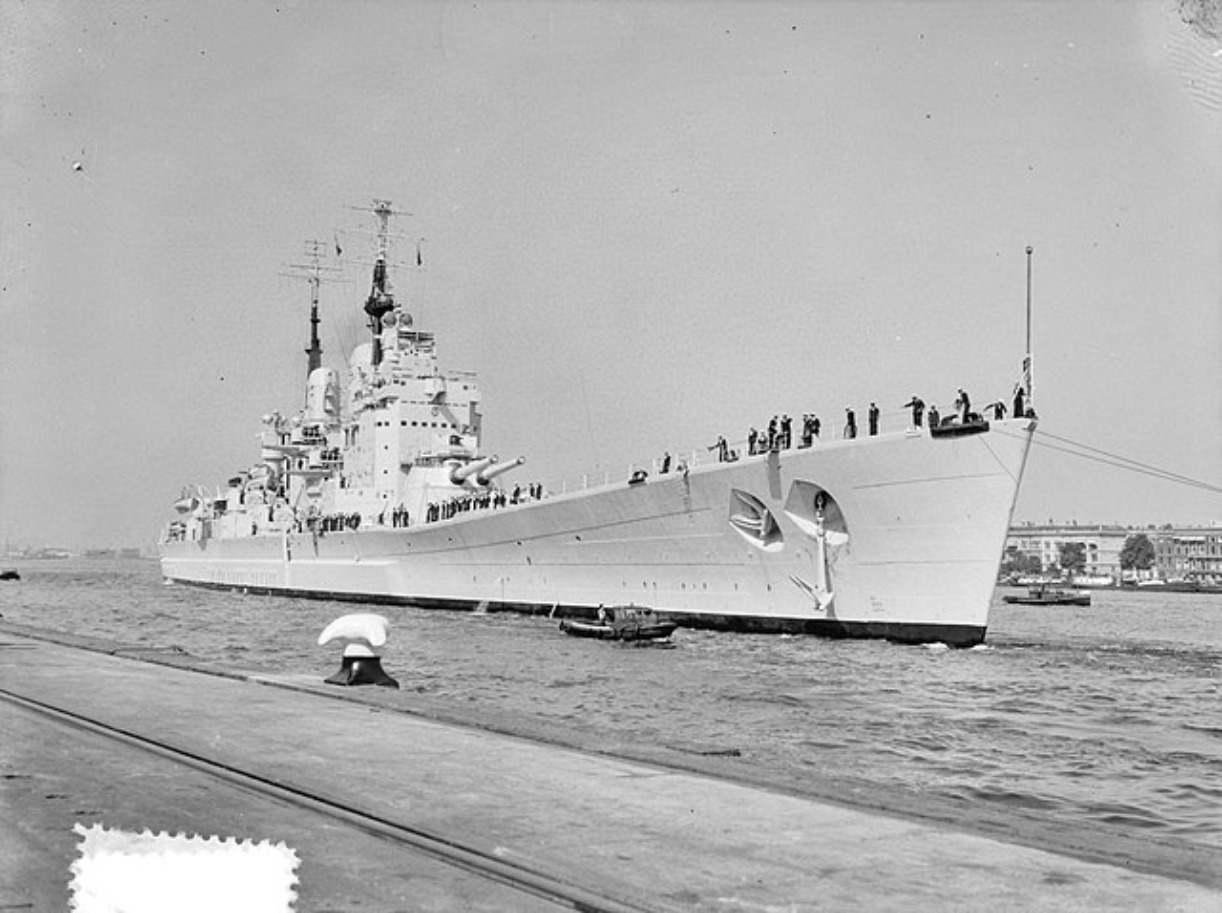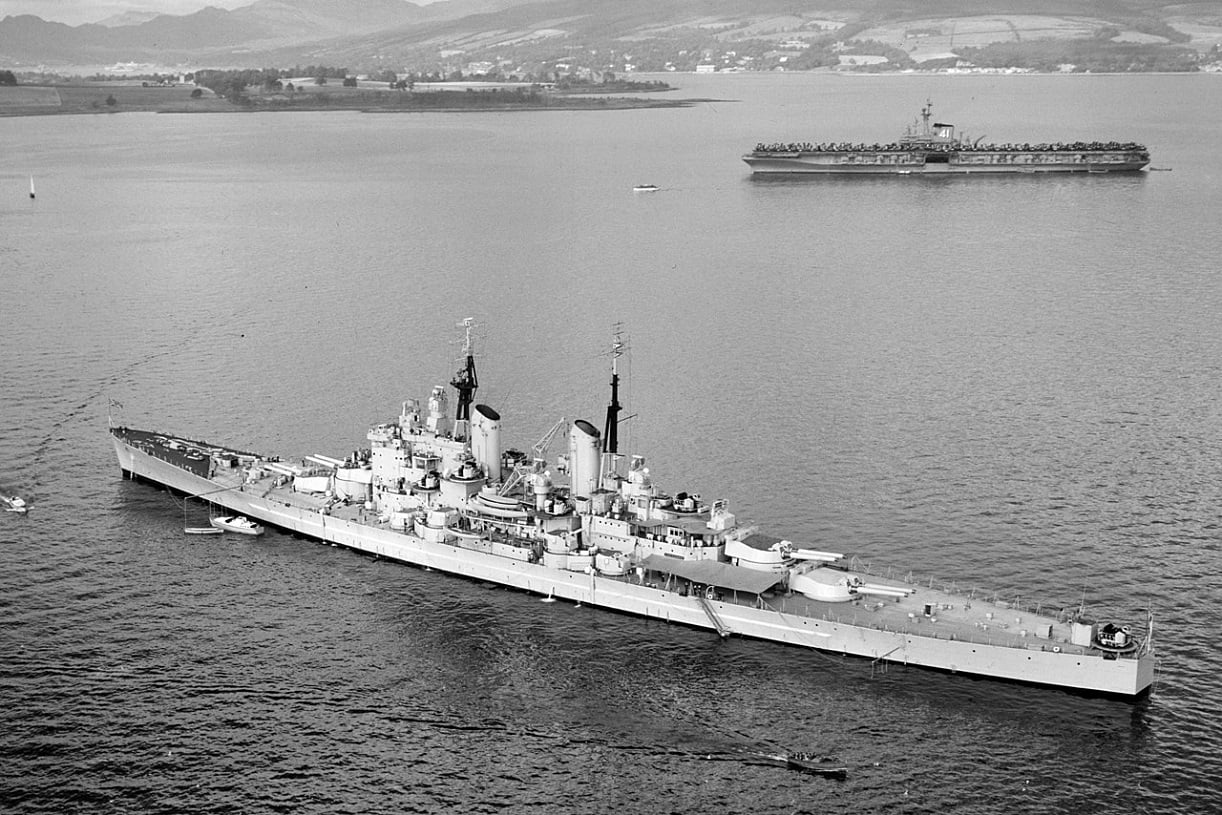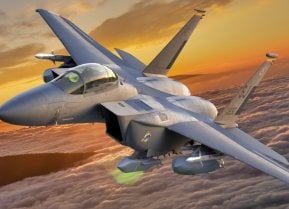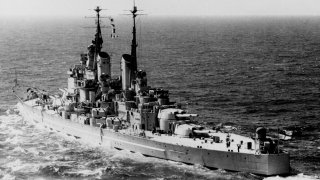HMS Vanguard: The Last Battleship Ever Built was a 52,000 Ton Powerhouse
The HMS Vanguard, the Royal Navy's last battleship, was conceptualized to counteract potential naval inferiority against German and Japanese forces during World War II.
Summary: The HMS Vanguard, the Royal Navy's last battleship, was conceptualized to counteract potential naval inferiority against German and Japanese forces during World War II. Initially part of the Lion-class, its design was modified to the King George V-class due to delays in producing 16-inch guns, utilizing available 15-inch guns instead. Costing £11,500,000 at the time (around $800 million today), its construction faced delays, only becoming operational in 1946. The Vanguard, measuring 814 feet in length and capable of 30 knots, was heavily armed with 97 guns, including 4 twin 15-inch main guns. It served until 1960 before being decommissioned and scrapped.
Battleships once ruled the waves. These steel behemoths carried thousands of men and could devastate an entire coast with their broadsides.
The last battleship to ever be built was the Royal Navy’s HMS Vanguard.
The HMS Vanguard Battleship
The idea for the HMS Vanguard came in response to a strategic assessment that by the early 1940s, the Royal Navy would be outnumbered in battleships by the German Kriegsmarine and Japanese Imperial Navy. As a result, the British shipyards started building the Lion-class battleships. However, construction of the class’ 16-inch main guns was taking too long, pushing the Royal Navy to adjust its plans. With already several 15-inch guns ready to go in storage, Royal Navy planners decided to convert one of the Lion-class ships into the King George V-class battleship. The result was the HMS Vanguard.
The HMS Vanguard came with a hefty price. At the time, the battleship cost the Royal Navy approximately £11,500,000, which translates to almost $800 million today.
Although planners initially expected the battleship to be ready before the end of the war, several changes in the design, reflecting actual wartime experience, delayed the construction of the HMS Vanguard. It wasn’t until 1946 that the warship embarked on its sea trials and became operational a year later. The battleship served in various roles until 1960, when she was decommissioned and sold for scrap.
A Powerful Warship
With a length of 814 feet and a draft of 36 feet, the HMS Vanguard was one of the longest battleships. The warship weighed over 45 tons with light loads and 52 tons fully equipped. Despite its battle chunk, the HMS Vanguard could reach speeds of 30 nautical knots (35 miles per hour). With a complement of almost 2,000 officers and enlisted men, the battleship was ready for prologued naval fighting.
As a battleship, the HMS Vanguard was judged by its armament. Suffice it to say, with 97 guns of all types, the Royal Navy’s last battleship didn’t fall short.
In terms of main weaponry, the HMS Vanguard packed 4 twin 15-inch (381mm) guns. Although an inch wide and narrower than the more powerful 16-inch (406mm) cannon, the gun could fire a 1,900-pound shell at targets located more than 21 miles away. The 15-inch gun was the most successful main gun of the Royal Navy, seeing action in both World Wars. The HMS Vanguard was equipped with a remote power control that allowed the crew to automatically track a target and adjust elevation. The warship had two turrets in the aft and one in the fore.

In terms of secondary weaponry, the battleship carried 8 twin 5.25-inch (133mm) dual-purpose guns that could take out aerial, naval, and ground targets. Less powerful than the warship’s main batteries, these weapons provided important support at closer ranges. In addition, the HMS Vanguard packed a formidable air defense with a 10 sextuple, 1 twin, and 11 single 40mm Bofors anti-aircraft guns. The idea to have 72 air defense guns came out of the fighting in the Pacific, where Japanese pilots and Kamikaze wrought havoc on the Allied forces.

In terms of defense, the HMS Vanguard had armor ranging from 14 to 4.5 inches, depending on the location. At the most important parts of the ship, such as the magazines, armor was the thickest.
About the Author
Stavros Atlamazoglou is a seasoned defense journalist specializing in special operations and a Hellenic Army veteran (national service with the 575th Marine Battalion and Army HQ). He holds a BA from Johns Hopkins University and an MA from the Johns Hopkins School of Advanced International Studies (SAIS). His work has been featured in Business Insider, Sandboxx, and SOFREP. Email the author: [email protected].


